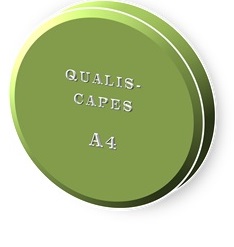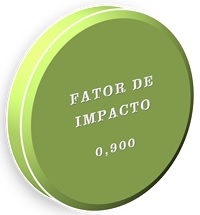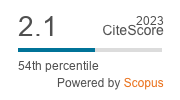Eficácia de iscas contendo fungos entomopatogênicos no controle de Gryllus assimilis
DOI:
https://doi.org/10.1590/1983-21252025v3812910rcPalavras-chave:
Biocontrole. Bioformulações. Insetos. Microbiológicos.Resumo
O controle biológico usando entomopatógenos, incluindo os fungos entomopatogênicos, oferece uma alternativa relativamente adequada para o manejo de pragas. Sabe-se que os fungos entomopatogênicos infetam e causam epizootias em uma ampla gama de ordens de insetos, incluindo Hemiptera, Lepidoptera, Coleoptera, Diptera, Hymenoptera e Orthoptera.. O objetivo do presente estudo foi avaliar a eficácia dos fungos entomopatogênicos Metarhizium anisopliae, Beauveria bassiana e Isaria fumosorosea sobre a mortalidade de Gryllus assimilis (Orthoptera: Gryllidae) em ambiente de laboratório. Os testes foram realizados em delineamento inteiramente casualizado, com 4 repetições. Foram avaliadas duas cepas de B. bassiana e uma cepa de M. anisopliae e I. fumosorosea. 7 dias após o tratamento com M. anisopliae 0,15g, foi observada a maior mortalidade de G. assimilis, tendo causado mortalidade de mais da metade dos insetos.
Downloads
Referências
ALMEIDA, J. E. M. Biofactories for the production of mycopesticides in Brazil: business opportunities and innovations. Brazilian Journal of Animal and Environmental Research, 3: 2444-2557, 2020.
ALVES, S. B. Técnicas de laboratório: Controle Microbiano de Insetos. São Paulo, SP: Manole. 1986. 407 p
ANANI, O. A. et al. Effects of pesticide toxins on food safety: current developments In: MISHRA, P.; MISHRA, R.R.; ADETUNJI, C.O (Eds.). Innovations in Food Technology. New York, NY: Springer, 2020. v. 1., cap. 24, p. 313-321.
BOOMSMA, J. J. et al. Evolutionary interaction networks of insect pathogenic fungi. Annual Review of Entomology, 59: 467-485, 2014.
EL-GARHY, S. M. M. Impact of certain baits for controlling Anacardium egyptium (L.), under laboratory and field conditions, Fayoum Journal of Agricultural Research & Development, 25: 238-249, 2011
FENG, M. G.; POPRAWSKI, T. J.; KHACHATOURIANS, G. G. Production, rmulation, and application of the entomopathogenic fungus Beauveria bassiana for insect control: current status. Biocontrol Science and technology, 4: 3-34, 1994.
HASHIMI, M. H.; HASHIMI, R.; RYAN, Q. Toxic Effects of Pesticides on Humans, Plants, Animals, Pollinators and Beneficial Organisms Asian Plant Research Journal, 5: 37-47, 2020.
LIMBERGER, G. M.; NERY, L. E. M.;FONSECA, D. B. Reproductive status modulates mortality rate, lifespan and egg production, but do not physiological aging in the field cricket Gryllus assimilis (Fabricius, 1775) (Orthoptera: Grylidae), Neotropical Entomology, 50: 237-246, 2021.
HANEL, H. A. Selection of a fungus species, suitable for the biological of the termite Nasutitermes exitiosus (Hill) (Isoptera: Termitidae). Zeitschrift Angewandte Entomologie, 94: 237-245, 1982.
HUMBER, R. A. Evolution of entomopathogenicity in fungi. Journal of Invertebrate Pathology, 98: 262-266, 2008.
ISLAM, W. et al. Insect-fungal-interactions: A detailed review on entomopathogenic fungi pathogenicity to combat insect pests. Microbial Pathogenesis, 159: 105122, 2021.
KONAR, A.; SANTANU PAUL, S. P. Efficacy of some granular insecticides and biobiopesticides against mole cricket on potato. Journal of Applied Zoological Researchers, 16: 59-60, 2005.
LACEY, L. A. et al. Fungos entomopatogénicos (Hipocreales) para controle do psilídio da batata, Bactericera cockerelli (Sulc) (Hemiptera: Triozidae) em em uma área endémica para doença zebra chip da batata, Controle Biológico, 56: 271-278, 2011.
LOPES, R. B. et al. Efficiency of formulations of Beauveria bassiana and Metarhizium anisopliae for the control of nymphs of Amblyomma cajennense (Fabricius, 1787). Revista Brasileira Parasitologia Vetetrinaria, 16: 27-31, 2007.
MAINA, U. M. et al. A review on the use of entomopathogenic fungi in the management of insect pests of field crops. Journal of Entomology and Zoology Studies, 6: 27-32, 2018.
MANFO, F. P. T. et al. Evaluation of the Effects of Agro Pesticides Use on Liver and Kidney Function in Farmers from Buea, Cameroon. Journal of Toxicology, 29: 2305764, 2020.
MASCARIN, G. M.; JARONSKI, S. T. The production and uses of Beauveria bassiana as a microbial insecticide. World Journal of Microbiology and Biotechnology, 32: 1-26, 2016.
MEIKLE, W. G. et al. Evaluation of an entomopathogenic fungus, Paecilomyces fumosoroseus (Wize) Brown & Smith (Deuteromycota: Hyphomycetes) obtained from formosan subterranean termites (Isoptera: Rhinotermitidae). Journal of Applied Entomology, 126: 315-322, 2005.
PEDRINI, N.; CRESPO, R.; JUÁREZ, M. P. Biochemistry of insect epicuticle degradation by entomopathogenic fungi. Comparative Biochemistry and Physiology Part C: Toxicology & Pharmacology, 146: 124-137, 2007.
PELIZZA, S. et al. Application of Beauveria bassiana using different baits for the control of grasshopper pest Dichroplus maculipennis under field cage conditions. Journal of King Saud University – Science, 31: 1511-155, 2019.
RAMANUJAM, B. et al. Management of Insect Pests by Microorganisms. Proceedings of Indian National Science Academy, 80: 455-471, 2024.
ROHRIG, B. Entomopathogenic fungi in pest control: what they are and how to use them in the crop. Blog Aegro, 2021. Available at: https://blog.aegro.com.br/fungos-entomopatogenicos-no-controle-de-pragas/ Access on: Dec. 20, 2022.
R DEVELOPMENT CORE TEAM. Fundação R para Computação Estatística, Viena, 2023.
SCHNEIDER-ORELLI, Entomologisches Praktikum. 2. ed. Suíça: HR Sauerlander, 1947. 237 p.
SHAH, P. A; PELL, J. K. Entomopathogenic fungi as biological control agents. Applied Microbiology and Biotechnology, 61: 413-423, 2019.
SHARMA, A.; SHARMA, S.; YADAV, P.K. Entomopathogenic fungi and their relevance in sustainable agriculture: A review, Cogent Food & Agriculture, 9: 2180857, 2023.
STONE, L. B. L.; BIDOCHKA, M. J. The multifunctional lifestyles of Metarhizium: Evolution and applications. Applied Microbiology and Biotechnology, 104: 9935-9945, 2020.
TUPE, S. G. et al. Development of Metarhizium anisopliae as a mycoinsecticide: from isolation to field performance. Journal of Visualized Experiments, 125: 55272, 2017.
VEGA, F. E. et al. Fungal Entomopathogens. Insect Pathology, 2: 171-220, 2012.
Downloads
Publicado
Edição
Seção
Licença
Os Autores que publicam na Revista Caatinga concordam com os seguintes termos:
a) Os Autores mantêm os direitos autorais e concedem à revista o direito de primeira publicação, com o trabalho simultaneamente licenciado sob a Licença Creative Commons do tipo atribuição CC-BY, para todo o conteúdo do periódico, exceto onde estiver identificado, que permite o compartilhamento do trabalho com reconhecimento da autoria e publicação inicial nesta revista, sem fins comerciais.
b) Os Autores têm autorização para distribuição não-exclusiva da versão do trabalho publicada nesta revista (ex.: publicar em repositório institucional ou como capítulo de livro), com reconhecimento de autoria e publicação inicial nesta revista.
c) Os Autores têm permissão e são estimulados a publicar e distribuir seu trabalho online (ex.: em repositórios institucionais ou na sua página pessoal) a qualquer ponto antes ou durante o processo editorial, já que isso pode gerar alterações produtivas, bem como aumentar o impacto e a citação do trabalho publicado (Veja O Efeito do Acesso Livre).







